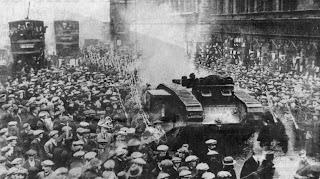AK Press a machine that keeps on producing gems. This From Bulletin of the Kate Sharpley Library October 2023
In 2013 Barry Pateman wrote a piece about Ethel Mannin’s No More Mimosa, his contact with Spanish anarchist exiles and the contrast between the revolutionary situation they had been part of and the grim reality of defeat. ‘Exile meant the end of nearly everything they had known. […] A terrible protective dignity became their defense against a world that had cast them adrift.’ [1]
The anarchist exiles were hardly a homogenous bloc. Different choices, experiences, attitudes and status within the movement before 1939 saw to that (never mind the difference between being exiled in, say, France or Mexico). As a child, Octavio Alberola went into exile with his family: his father was the rationalist schoolteacher José Alberola Navarro who clashed with some members of the Durruti Column: ‘The revolution’s purpose is not providing opportunities for vengeance, but rather to set an example.’ [p.20]
In exile in Mexico, Octavio met Fidel Castro and Che Guevara before they were famous; and also fell foul of the unwritten rule that refugees should not get involved in Mexican politics. After that, Alberola was part of the anarchist resurgence (and not only within the Spanish movement) that we think of as part of the sixties. Partly this connected with the confidence of a new generation, as seen at the Limoges Congress of 1961: ‘On one side stood the “veterans,” the militants who had fought against fascism in the civil war. They were now twenty-two years older, fifty years old and up. Mature, tempered people who proceeded at a comfortable pace. On the other side were the “newcomers,” the children of exile, who had left Spain at a very young age or been born elsewhere. With no investment in the myth, they didn’t hesitate to make action the priority.’ [p.114]
Octavio was part of this ‘activist’ current, being involved in Defensa Interior and the First of May Group. Neither group succeeded in assassinating Franco but their other strand of symbolic actions generated much negative publicity for the Spanish dictatorship. Not to mention a certain amount of controversy within the movement. After the Ussia kidnapping by the First of May Group,[2] leaders of the CNT denounced the ‘thoroughly negative initiative’ [p.176] only to be answered ‘They at least are living in the present rather in the past like some older militants who once had credibility, or in the future, like others who make anarchy the way they would construct scale models once their working hours are over or when they have time on their hands’.[3]. Some veterans, Like Cipriano Mera or Juan Garcia Oliver, were involved in the Defensa Interior, so it was not purely a difference of generations.
The Weight of the Stars: The Life of Anarchist Octavio Alberola by
Agustín Comotto with Octavio Alberola, translated by Paul Sharkey.
https://www.akpress.org/the-weight-of-the-stars.html
Visit ann arky at https://spiritofrevolt.info



































